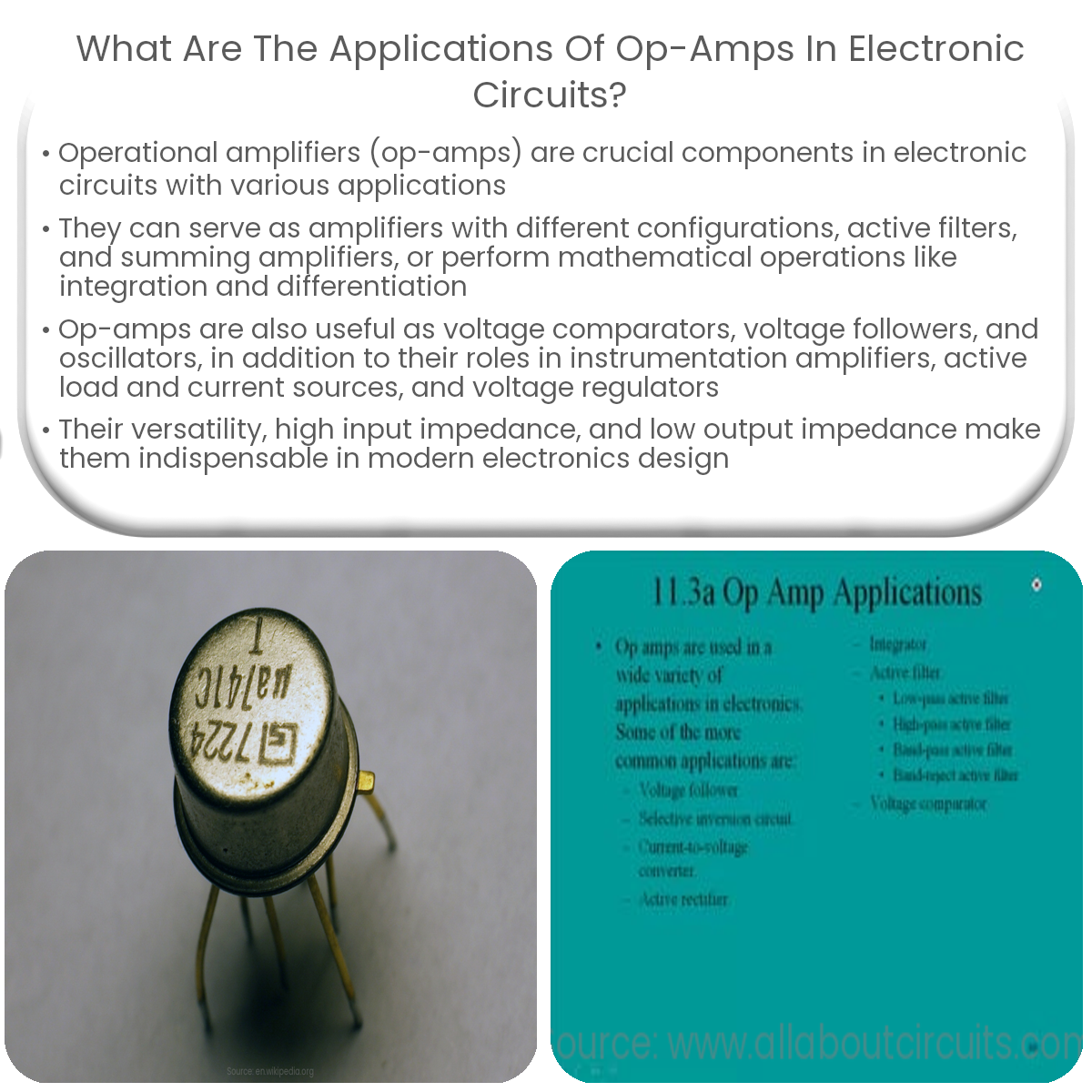Op-amps are used in amplifiers, filters, summing amplifiers, integrators, differentiators, comparators, voltage followers, oscillators, and voltage regulators.
Applications of Op-Amps in Electronic Circuits
Operational amplifiers (op-amps) are versatile and essential components in many electronic circuits. They have a wide range of applications, such as:
Amplifiers: Op-amps can be configured as inverting, non-inverting, or differential amplifiers to amplify input signals with varying gains.
Filters: Op-amps are used in active filters, such as low-pass, high-pass, band-pass, and band-stop filters, for signal processing applications.
Summing amplifiers: Op-amps can add multiple input signals, functioning as mixers or audio mixers in audio systems.
Integrators and differentiators: Op-amps can perform mathematical operations, such as integration and differentiation, on input signals for control and analog computing systems.
Comparators: By comparing two input voltages, op-amps can be used as voltage comparators to generate digital signals for control systems and logic circuits.
Voltage followers: Also known as buffer amplifiers, voltage followers provide a high input impedance and low output impedance, isolating stages in a circuit.
Oscillators: Op-amps can be used to build various types of oscillators, such as Wien bridge, phase-shift, and relaxation oscillators, for generating sinusoidal or non-sinusoidal waveforms.
Instrumentation amplifiers: Op-amps are used in instrumentation amplifiers for their high input impedance, low output impedance, and high common-mode rejection ratio (CMRR), making them suitable for precise, low-noise measurements in sensor and data acquisition systems.
Active load and current sources: Op-amps can be used to create active loads and constant current sources in power supply and biasing circuits.
Voltage regulators: Op-amps are used in linear voltage regulators to maintain a constant output voltage despite variations in input voltage and load current.
These are just a few examples of the numerous applications of op-amps in electronic circuits. Their versatility, coupled with their high input impedance, low output impedance, and ease of use, make op-amps indispensable in modern electronics design.



